Where and what to eat and drink in Seoul
I Want to Die but I Want to Eat Tteokbokki is an easy-to-read memoir by Korean author Baek Se-hee. It is also the first Korean book I’ve read. Since I read it, tteokbokki, a popular and delicious Korean dish – chewy rice cakes cooked in a red, spicy broth, has become one of my favourite Korean dishes. When I recently visited Seoul, I stuffed myself not only with tteokbokki but also with many other Korean delicacies. Today, I’m sharing my recommendations for where and what to eat and drink in Seoul.
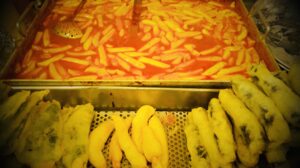
Kyoja Myeongdong – noodle soup (kalguksu)
Kyoja is a famous restaurant in Seoul’s Myeongdong neighbourhood. I went there on my very first day in Seoul (without a reservation). They only have 4 dishes on the menu, but they’d sold out one (kongguksu). I tried the rest and I liked them all. My favourite was the noodle soup (kalguksu). Fast service. Excellent value for money. Highly recommended.
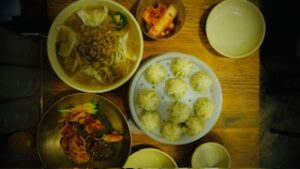
Afterwards, I wandered around Myeongdong (Korean for bright neighbourhood). Although I had just eaten, I couldn’t resist trying a few more Korean delicacies (mostly sweet) at Myeongdong’s street food market. Myeongdong is known for being one of Seoul’s main shopping districts. In 2023, it was listed as the ninth most expensive shopping street in the world. It is also known for being home to the Cathedral Church of Our Lady of the Immaculate Conception, also known as simply the Myeongdong Cathedral.
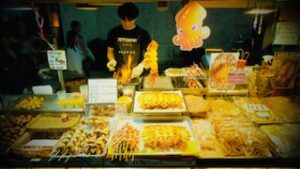
Imun Seolnongtang – ox bone soup (seollongtang)
Located in the Jongno District, Imun Seolnongtang is another famous restaurant. It opened in 1904 and was the first eatery in Korea to officially register for a restaurant license. To this day, it honours the tradition of boiling ox bones for 17 hours until the broth turns rich and opaque. I had lunch there on my second day, after visiting the nearby Gyeongbokgung Palace. Built in 1395, it is the largest of the Five Grand Palaces built by the Joseon dynasty. Gyeongbokgung served as the home of the royal family and the seat of government but is now open to the public.
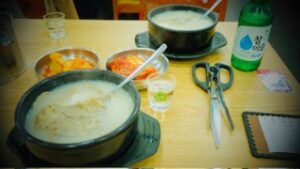
밥도사 술도사 – meat
Later on the same day, I had dinner at a restaurant called 밥도사 술도사. It is located close to the Jongno 3-ga metro station (the gateway to the Ikseon-dong Hanok Village). Here I had my first experience of Korean barbeque. Although they did not have built-in grills, they provided us with portable stoves to use at our table. So, we ended up cooking our food. The atmosphere was great and the food was delicious!
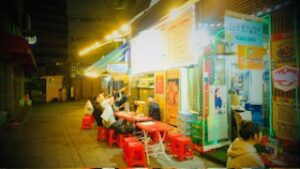
Alternatively, I would recommend dining at one of the many restaurants on Donhwamun-ro 11-gil. Although I didn’t manage to, I had the gut feeling it would also have been an authentic but great gastronomic experience.
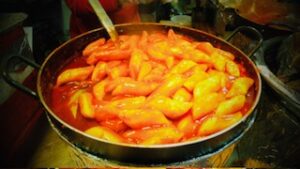
Ounce – Midnight in Seoul
Not far from there, there’s Ounce, a queer-friendly cocktail bar. I really enjoyed the sophisticated atmosphere, as well as the cocktail I tried (Midnight in Seoul). The bar is located on the ground floor of the Top Hotel & Residence.
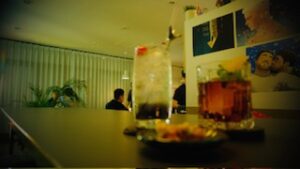
Charles H. – Bing Cha Spritz
Located at the lower level of the Four Seasons Hotel, Charles H. is another cocktail bar I would recommend. I had a Bing Cha Spritz, which I really enjoyed, as well as the speakeasy atmosphere of the bar.
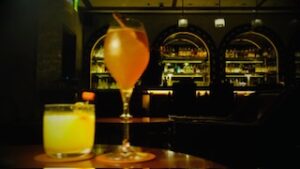
Dutum – meat, meat, meat
Dutum is a famous samgyeopsal (pork belly) restaurant in Seoul, near the city’s central train station. It is very popular with locals, and it was actually some Seoulites who recommended it to us.
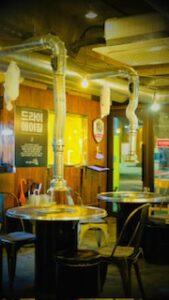
Korean barbeque restaurants like Dutum are extremely very popular in Korea. A gas or charcoal grill is built into the dining table itself, and it is often the customers who grill their meat. The meat is then enjoyed with kimchi and various other condiments. It goes well with soju, a popular alcoholic beverage traditionally made from rice.
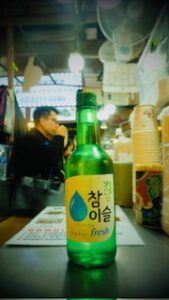
담솥 연남점 – hot rice dish
A dolsot (“stone pot”) or gopdolsot (“agalmatolite pot”) is a small-sized piece of cookware or serveware made of agalmatolite, suitable for 1-2 servings of bap (cooked rice). In Korean cuisine, various hot rice dishes such as bibimbap or gulbap (oyster rice) as well as plain white rice can be prepared and served in dolsot. As a dolsot does not cool off as soon as removed from the stove, rice continues to cook and arrives at the table still sizzling.
I tried it at 담솥 연남점, a restaurant near Hongik University metro station.
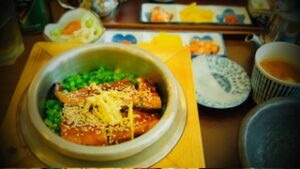
Gwangjang Market – everything, including sannakji
Gwangjang Market is one of the oldest and largest traditional markets in South Korea, with more than 5000 shops and 20,000 employees in an area of 42,000 m2. Approximately 65,000 people visit the market each day, and I am happy to say that I was one of them. I actually liked it so much that I visited twice. During my visits, I tried many traditional Korean delicacies, such as tteokbokki, bindaetteok (mung bean pancakes), dumplings, pork rind, japchae (glass noodles), and kalguksu (hand-cut noodle soup). I had the latter at the same stall that was featured on the Netflix TV series Street Food Asia. Overall, I really loved the food but I also enjoyed the experience of eating sitting around the food stalls.
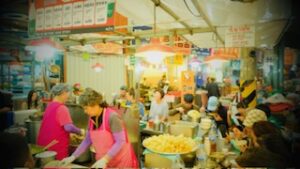
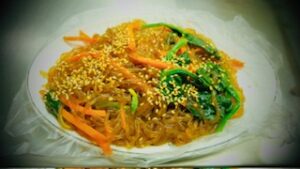
One of the most memorable and unique gastronomic experiences I’ve ever had, was when I tried sannakji. This is a raw dish made with octopus , which is killed before being cut into small pieces and served. The nerve activity in the octopus’s tentacles makes the sliced pieces move posthumously on the plate while served. The dish is sprinkled with sesame oil and toasted sesame seeds and goes well with soju.
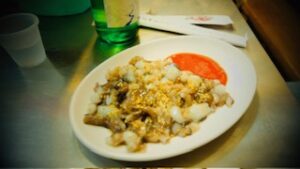
Namdaemun Market – hotteok
Namdaemun Market is another large market, albeit an outdoors one. It is located near Myeongdong, but closes early, so it’s not suitable for dinner.
Hotteok is a pancake filled with a sweet mixture, which may contain brown sugar, honey, chopped peanuts, and cinnamon. It is a very popular street food in Korea. Nowadays, alternative fillings, including savoury ones, can also be found. I tried it at the Namdaemun Market – the stall was right in front of the IBK bank (Gate 2).
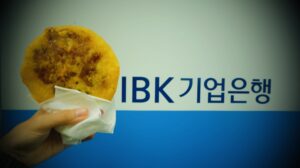
Gong Cha – pearl-bokki
Gong Cha is a Taiwanese tea drink franchise, popular in South Korea. In just three years, Gong Cha spread from a single store in Hongdae to 250 locations nationwide. Gong Cha Korea recently launched the pearl-bokki as a permanent menu item. The new drink features larger-than-usual pearls and comes in two flavours: original (which tastes sweet and spicy) and spicy.
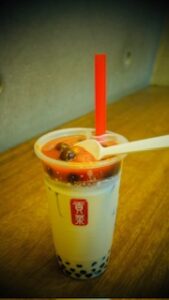
Cheongsudang Bakery – yakgwa
This is the first café I visited, soon after I arrived in Seoul. It is located in the Ikseon-dong Hanok Village, very close to where I stayed. As well as a café, it is also a patisserie specialising in yakgwa, a traditional Korean dessert. A yakgwa is basically a deep-fried honey cookie. The name ‘yakgwa’ consists of two syllables, ‘yak’ (medicine) and ‘gwa’ (confection), so it actually means ‘medicinal confection’. This is because honey was considered to be medicinal. I also tried the black sesame fromage cake. Drinks I tried include the signature stone drip egg coffee and the custard chocolate. Overall, Cheongsudang Bakery is one of my favourite cafes to eat and drink in Seoul and I would highly recommend a visit there.
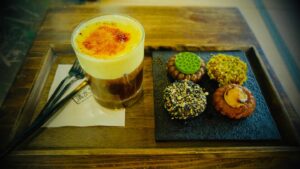
Nudake – croissants, croissants, croissants
Nudake is also one of my favourite cafes to eat and drink in Seoul and I would highly recommend it. Located in Gagnam, it is not too far from the Starfield Library – also well worth a visit. They specialise in croissants, and they have a big selection of both sweet and savoury pastries. Some are inspired by traditional Korean dishes/flavours, such as kimchi and hotteok. Pastries aside, I really enjoyed the décor, including some oversized croissants!
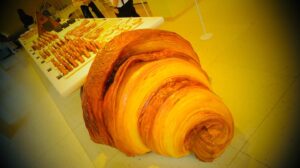
Further reading
To read about more places to eat and drink in Seoul, check out my post ‘10 patisserie cafes in Seoul’.
I Want to Die but I Want to Eat Tteokbokki
This easy-to-read memoir was first published in Korean in 2018 and was translated into English in 2022. A second book, I Want to Die but I Still Want to Eat Tteokbokki: Further Conversations with My Psychiatrist, was released on 6 June 2024, but I am yet to read it.
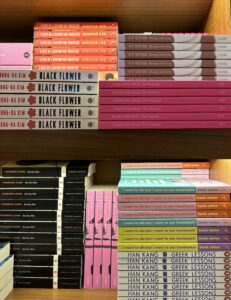
I found it particularly interesting, as the author, a dysthymia sufferer herself, recorded her conversations with her psychiatrist.
As a psychiatrist myself, I can’t help but notice the disproportionately high number of suicides among young Korean artists, such as Song Yoo-jung, Choi Jin-sil, Kim Jong-hyun, Goo Hara, Cha In-ha, Sulli, and Oh In-hye.
There could be many factors contributing to this sad statistic, both individual and societal. For example, many of those artists have been the victims of online abuse. At the same time, mental illness remains a taboo in South Korea (and therefore largely untreated). Despite the country’s economic growth, stigma is very prevalent throughout South Korean society. It is therefore not surprising that suicide is far more prevalent there than in the West. In fact, according to the World Health Organization, the suicide rate in South Korea was the fourth highest in the world in 2019 (28.6 per 100k people). It is also worth noting that Seoul’s Mapo Bridge has earned the nickname “The Bridge of Death” or “Suicide Bridge” because of how many people jump off it.
Alex
(the Traveling Psychiatrist)